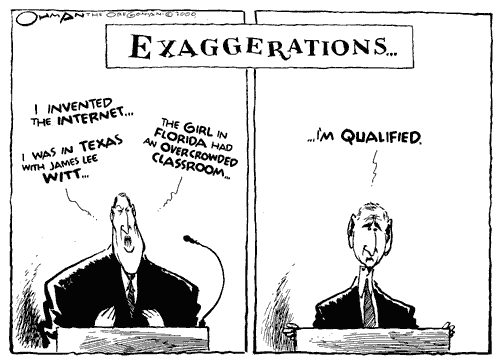FINE PRINT: This is an original quote...COPYRIGHT KNPSM 2001....hahahahaha
 By:
Deepa Mahajan,
Michelle Park,
Na'ama Shenhav,
Mark Narcisa,
Audrey Kuo
By:
Deepa Mahajan,
Michelle Park,
Na'ama Shenhav,
Mark Narcisa,
Audrey Kuo

EXAMPLES OF FAMOUS LIES:
 "I never had sexual relations with that woman, Ms. Lewinsky, and I never, ever told anyone to lie." -BILL CLINTON
"I never had sexual relations with that woman, Ms. Lewinsky, and I never, ever told anyone to lie." -BILL CLINTON

 "I was not lying. I said things that later on seemed to be untrue."-- Richard Nixon, discussing Watergate in 1978
"I was not lying. I said things that later on seemed to be untrue."-- Richard Nixon, discussing Watergate in 1978

Nixon, Reagan, Clinton
"Read my lips, no new taxes!"--George Bush


Interpersonal Deception Theory is a theory that describes deception that is used in conversation between two people. There are many variations of deception including falsification, concealment, and equivocation. The definitions of these words are included below in the vocabulary section of the site. Deception is defined as an untruthful message that a sender tells to a receiver. A deceiver is knowingly manipulating information, which is usually presented in a sincere way. The deceiver may be unconscious of this, but he/she, may not realize that they are practicing "leakage”.
Miron Zuckerman and Robert Driver have developed what they call "The leakage Hierarchy." This is basically an assumption that our nonverbal behavior is somewhat unintentional. This idea essentially suggests that, when we try to deceive, our body gives us away. Some researchers have focused on the face to reveal cues of deception while others like Ekman and Friesen have focused on the non-verbal cues of the body. Zuckerman and Driver have identified four cues to deception 1) Attempted Control, 2) Arousal, 3) The Affective Approach and, 4) Cognitive Factors (Siegman & Feldstein, Eds., 1985). By studying visual, paralinguistic, and verbal cues, Zuckerman and Driver have identified how and when some behaviors are associated with deception.
"Othello Error" (Ekman, 1992): the fear and stress of being disbelieved are misinterpreted by the other person as evidence of lying. A common mistake made by many who think themselves clever enough to think they can interpret whether someone is lying. However, what they think is lying is actually just that person's fear of being disbelieved. Thus, that person is mistaken in believeing that the other was lying
Spotting a liar is difficult, and some say that it is nearly impossible. According to professor of psychology at the University of California, San Francisco, few people are able to spot deception more than 50% of the time. His study also reported that federal officials performed best at lie detecting, being able to correctly guess 73% of the time. The reason? Training, experience, and motivation. Therefore, not many can actually distinguish between truth and falacy unless they are looking for a sign of deception, and unless they have significant amounts of practice doing so. A few signs that give a liar away are that they either stare at you or can't seem to meet your gaze. Often a liar doesn't know what to do with his or her eyes, lest it becomes obvious they are lying. As a result, they overdo one or the other: staring or gazing off into space. Another sign is a repeated motion. For example, tapping one's foot. A third sign is significant increase or decrease in rate of speech. Therefore according to this, if the person infront of you is tapping their foot uncontrollably, staring at you until they absolutely have to blink, and is speaking exceptionally quickly, you could...with about 50% accuracy =)...say that he or she is lying.
Theory applications
A brief Overview
a PPt presentation which includes the basics of deception theory
How to spot a liar
Good Overview
POLITICAL EXAGGERATIONS

Being able to detect lies has many applications to real life. For example, say you're an employer, and you ask a prospective employee if they've ever been arrested. Well, if he or she lies and says no when they've actually committed a felony, you're in for a negligent hiring lawsuit. Another way it's useful is if you're a parent and your child lies to you about where they are going to be at a certain time. If they end up going to smoke weed, or go to a movie instead of studying for finals, chances are you would have wanted to know about this. Lastly, if a friend tells a white lie and says that your hair looks wonderful when a so-called beautician has butchered you, maybe you'd want to know. After all, if you are sucessfully deceived, you've put yourself at a horrible risk. For heaven's sake, what if you go back and get that haircut again????
When a teenager lies to his parents about where he has been and what he was doing, he may use modifiers to help conceal his true actions. If he says he was studying with a reputable friend, his parent is more likely to believe him than if he said that he was studying by himself or with another friend that is not as academically inclined. (I know I used a male teenager, and yes, women do lie. But we’re too good at it to be detected.)
 Vocabulary Words
Vocabulary Words
